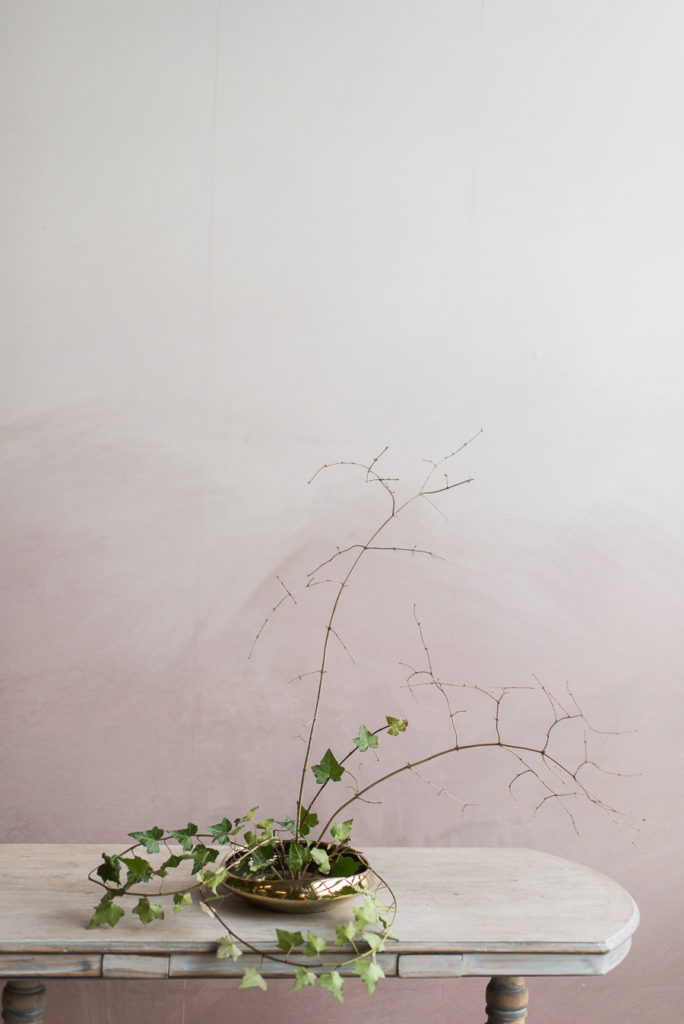Design Sketch: Hanamai Ikebana

Ikebana is a time to observe nature. To work with nature and find its form. It is influenced by Buhdist ideals of minimalism. The form of an ikebana arrangement should be found rather than planned. You find what is already there in yourself and nature.
Hanamai, Dancing Flowers
Hanamai is ikebana that expresses the sculptural beauty of the materials brought out by their interaction in three-dimensional space. Hanamai has no fixed rules as to the length of the stems, size, angle, or direction of the materials. The materials may approach, touch, overlap, mix, and interlace with each other to create beautify through harmony or through contrast.
The basic standard is to use two materials, with three being the limit. It is a truly free form of ikebana, simplistic in form yet complex in meaning.
Generally a triangular composition of three main layers: the tallest (Shin) representing heaven, the lowest (Soe) earth, with man as the bit of flora in the middle (Hikae) trying to negotiate between them.










